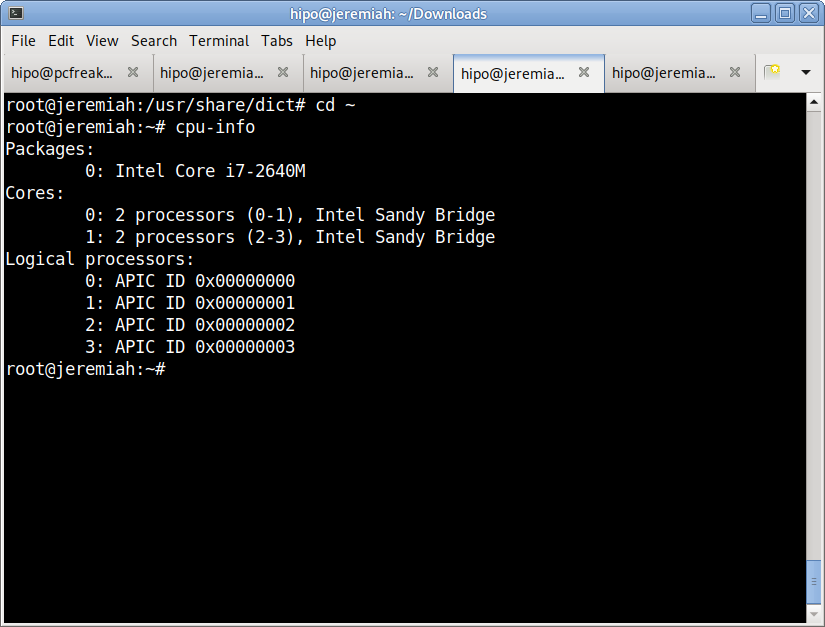
SCHED_RR is identical to SCHED_FIFO except that each process can run only until it exhausts a predetermined timeslice.

If a SCHED_FIFO task is runnable, all tasks at a lower priority cannot run until it becomes unrunnable. Only a higher priority SCHED_FIFO or SCHED_RR task can preempt a SCHED_FIFO task.Two or more SCHED_FIFO tasks at the same priority run round-robin, but again only yielding the processor when they explicitly choose to do so. Itly yields the processor it has no timeslice and can run indefinitely. When a SCHED_FIFO task becomes runnable, it continues to run until it blocks or explic. A runnable SCHED_FIFO task is always scheduled over any SCHED_NORMAL tasks. SCHED_FIFO implements a simple first-in, first-out scheduling algorithm without timeslices. Via the scheduling classes framework, these real-time policies are managed by a special real-time scheduler, defined in kernel/sched_rt.c Linux provides two real-time scheduling policies, SCHED_FIFO and SCHED_RR. The Completely Fair Scheduler (CFS) is the registered scheduler class for normal processes, called SCHED_NORMAL in Linux (and SCHED_OTHER in POSIX). The highest priority scheduler class that has a runnable process wins, selecting who runs next. Over each scheduler class in order of priority. Each scheduler class has a priority.The base scheduler code, which is defined in kernel/sched.c, iterates Pluggable algorithms to coexist, scheduling their own types of processes. The Linux scheduler is modular, enabling different algorithms to schedule different types of processes.This modularity is called scheduler classes. These mechanisms should, in theory,Įnsure that the cores are kept busy if there is work to do. Load-balancing logic upon placement of newly created or So in addition to periodic load-īalancing, the scheduler also invokes “emergency” load bal-Īncing when a core becomes idle, and implements some Pens, cores might become idle when there is work to do, At the same time, not executing it oftenĮnough may leave runqueues unbalanced. Goes to great lengths to avoid executing the load-balancing Motely cached data structures, causing extremely expensiveĬache misses and synchronization. Wise, because it requires iterating over dozens of runqueues,Īnd communication-wise, because it involves modifying re. Load balancing is anĮxpensive procedure on today’s systems, both computation.

It was, therefore,ĭifficult to foresee that on modern multicore systems loadīalancing would become challenging. Were mostly single-core and commodity server systems typ. Therefore, what Linux and most other schedulers do is periodically run a load-balancing algorithm that will keep the queues roughly balanced.Ĭonceptually, load balancing is simple. Runqueues, the runqueues must be kept balanced. Work correctly and efficiently in the presence of per-core However, in order for the scheduling algorithm to still On multi-core systems, CFS becomes quite complex.In multicore environments the implementation of the scheduler becomes substantially more complex. Which contains the thread with the smallest vruntime. Thread to run it picks the leftmost node in the red-black tree, Red-black tree, in which the threads are sorted in the increasing order of their vruntime. Threads are organized in a runqueue, implemented as a Thread might also get pre-empted if another thread with a The CPU if there are other runnable threads available.

Once a thread’s vruntimeĮxceeds its assigned timeslice, the thread is pre-empted from When a thread runs, it accumulates vruntime ( runtime of The resulting interval (after division) is what we call theĪ thread’s weight is essentially its priority, or Is divided among threads proportionally to their weights. The important thing is that your process will not block at all, in terms of process time, but not in terms of wall time.The scheduler defines a fixed time interval during whichĮach thread in the system must run at least once. But this is completely out of your control whether you specify a zero timeout or not. In Linux, when a non-preemptible system call returns the kernel will check to see if a time slice has expired, and if so, invokes the scheduler.

By nature, the kernel cannot schedule in units smaller than a clock tick because this is its only conception of time.Ī kernel could choose to busy-wait (spin) in order to implement very small delays, but this is generally not preferred because it wastes processor time. being specified in nanosec, you have to wait in any case for the time resolution given by the HZ kernel parameter, which can be 10 msec in older kernels or 1 msec in later kernels with HZ=1000 ?If you specify a non-zero timeout this timeout will usually be rounded up to the scheduler's resolution. Ok so it does not happen smething similar to sleep() where, despite of the arg.


 0 kommentar(er)
0 kommentar(er)
